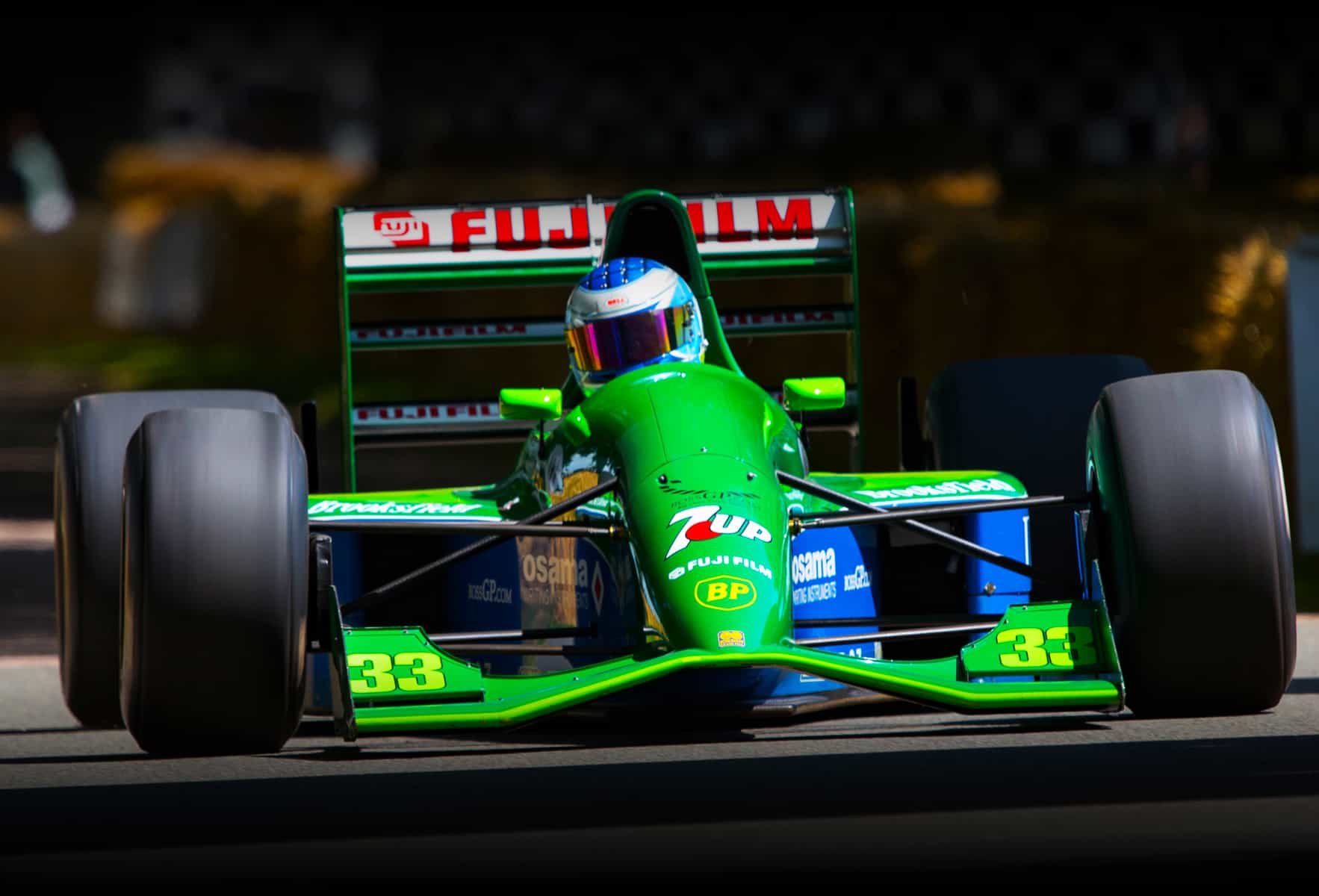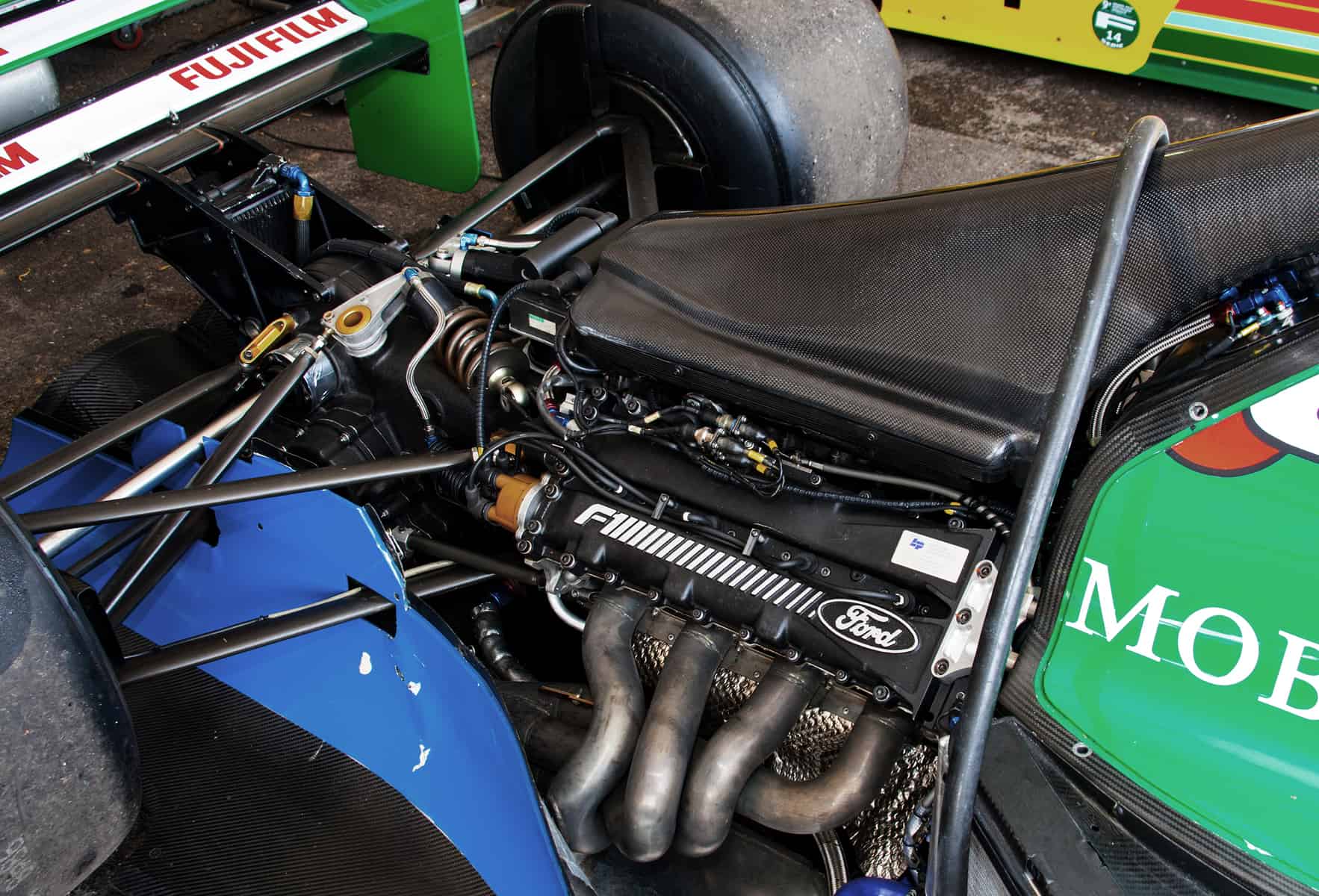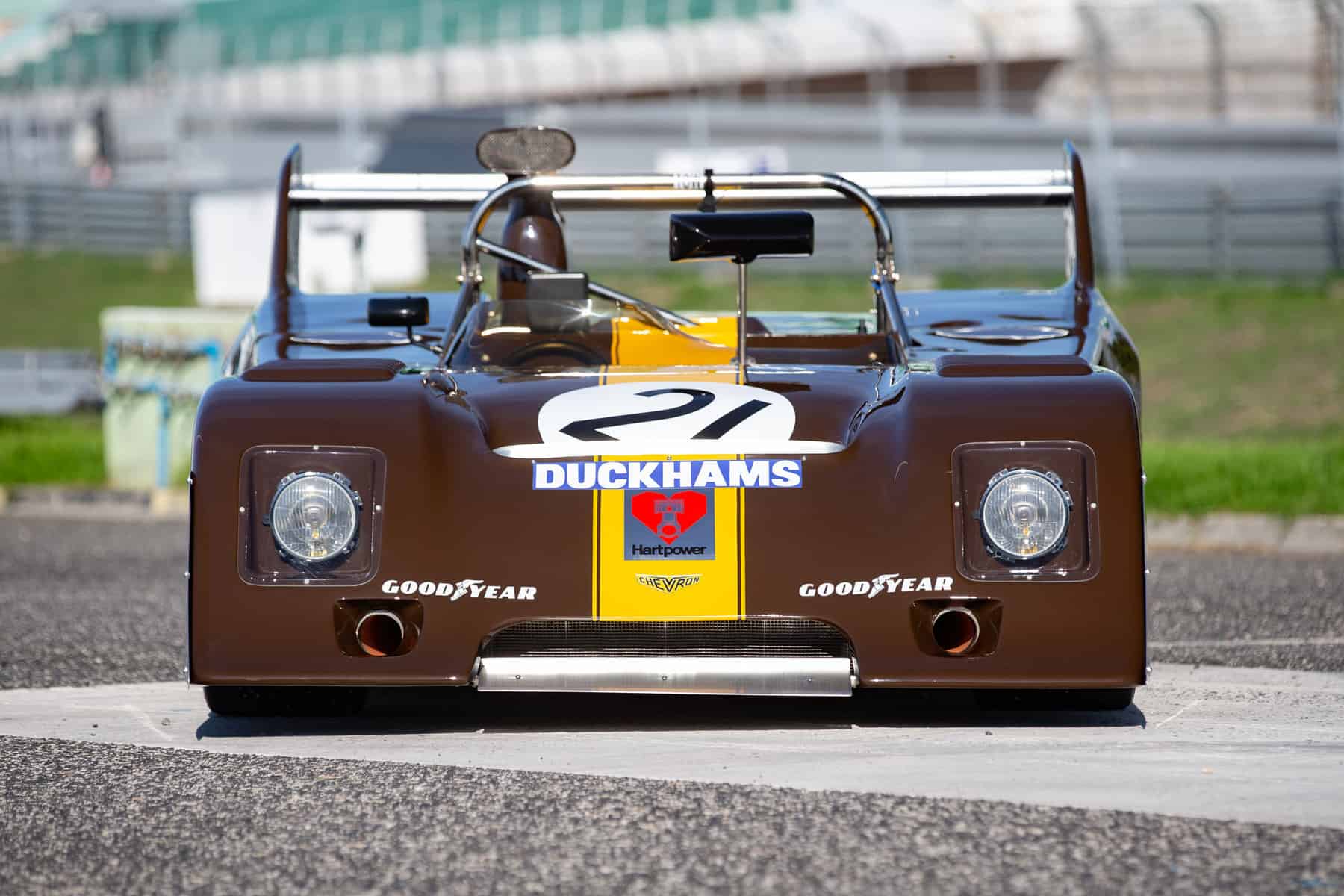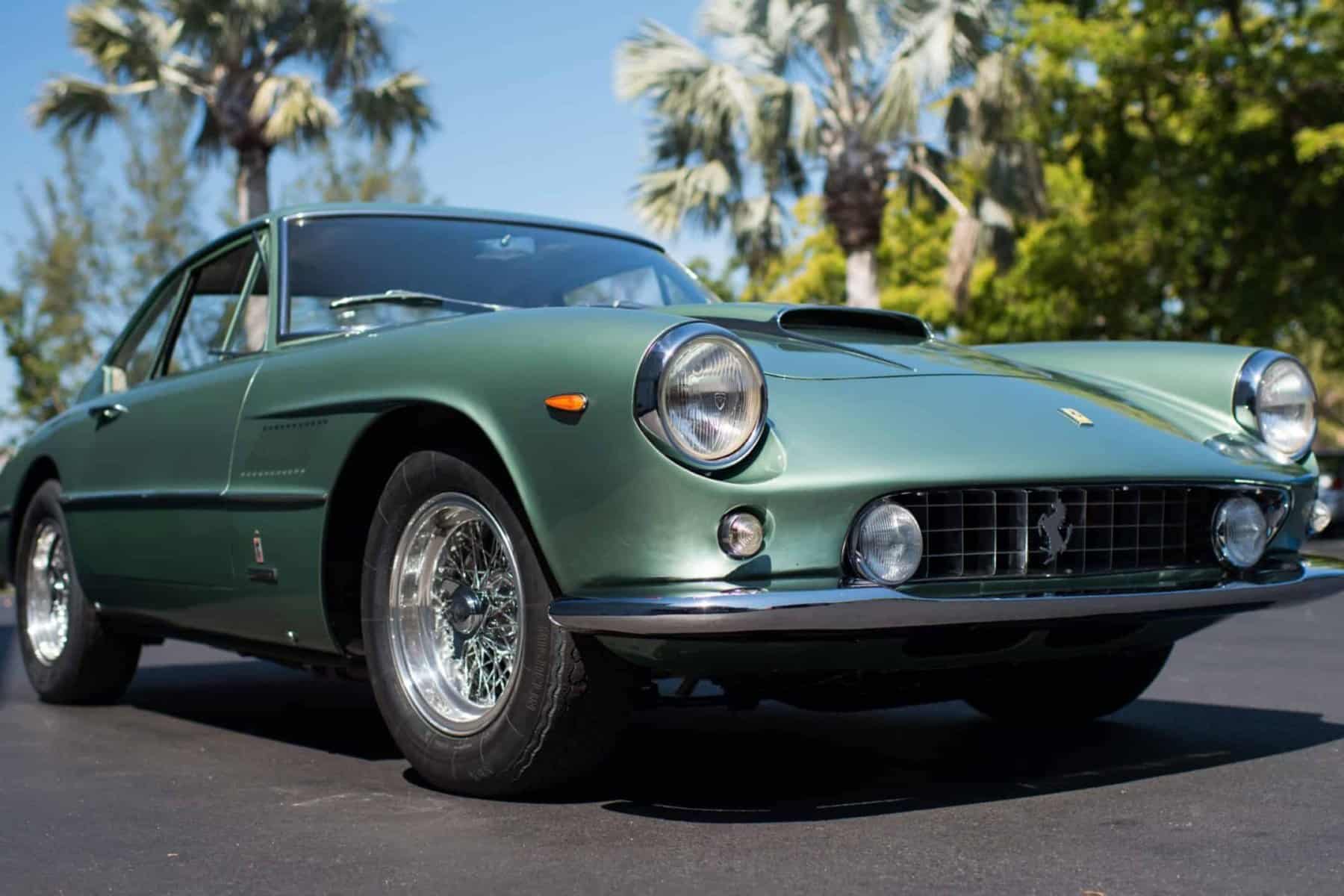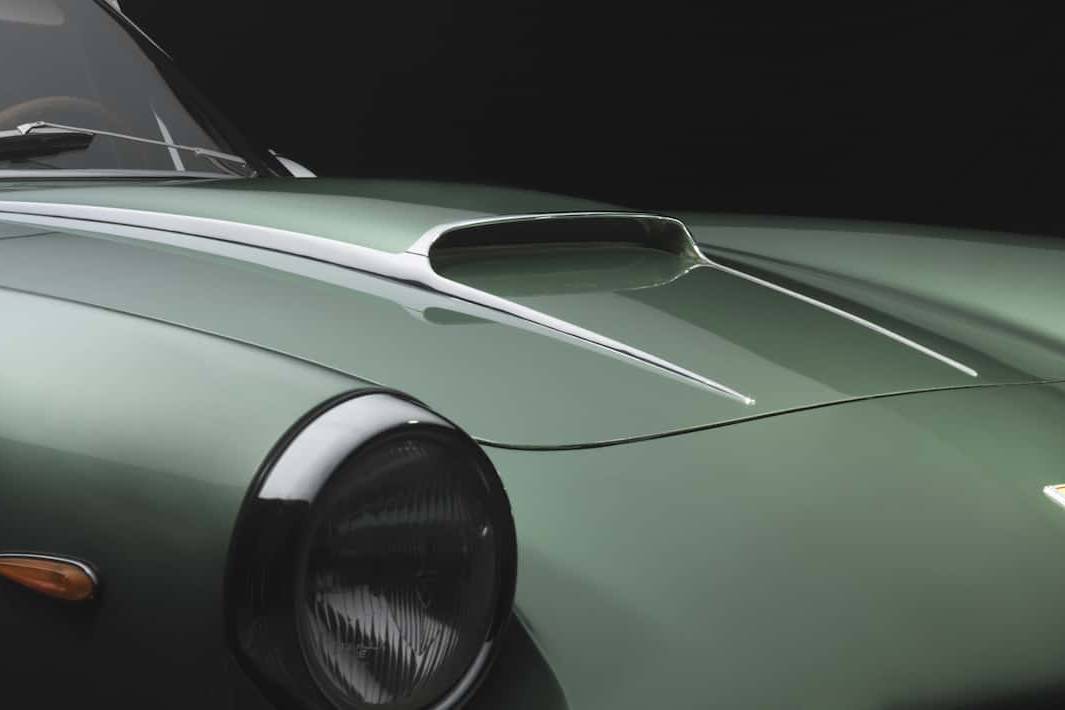Jordan 191
The tale of Eddie Jordan’s dashing dynamo
BY: WOUTER MELISSEN
Ask a seasoned Formula 1 fan to pick the best-looking cars of the modern era and there is a fair chance the Jordan 191 will feature prominently on the list.
Its appeal is the result of the Jordan’s elegant and above all very clean lines, perfectly complemented by the 7UP / Fuji livery. The 191 was not just a looker, as Andrea de Cesaris came very close to snatching victory from Ayrton Senna at the 1991 Belgian Grand Prix, and also helped launch the Formula 1 career of one Michael Schumacher.
All this came at the very first year for Jordan Grand Prix in Formula 1, which would lay the foundation for several Grand Prix wins. From the 2021 season, the Silverstone-based team that debuted in 1991 will be entered under the Aston Martin name.
That the brand new Jordan Grand Prix team did so well was by no means an accident. It was very much the result of the gradual and successful climb up the motorsport ladder by the team that had been formed by Irishman Eddie Jordan in the late 1970s. He had been an accomplished driver himself but ultimately figured he was even more effective as a team principle. Under the Eddie Jordan Racing banner, he campaigned in the British Formula 3 championship for several seasons.
In 1983, Martin Brundle finished second in the championship for Jordan, beaten only by Ayrton Senna. The first title for the team came in 1987 with Johnny Herbert as the driver. Building on this success, the team stepped up to F3000 in 1988. This was the penultimate step on the ladder. Racing a Reynard chassis, Jean Alesi won the 1989 title for Eddie Jordan Racing.
In order to take the final but rather big step, Eddie Jordan formed Jordan Grand Prix. Among the first employees of this new venture was technical director Gary Anderson, who had previously designed the Reynard 89D that Alesi had driven to the F3000 title for Jordan in 1989. The move up to Formula 1 could hardly be better timed. The expensive turbo engines had been banned from the start of the 1989 season, while the high-tech electronics typical for the early 1990s cars would only really come to the fore in the 1992 season.
This opportunity was definitely not only spotted by Eddie Jordan; the 1991 season-opening United States Grand Prix at Phoenix had no fewer than thirty-four cars on the entry list. As a result, several teams, including Jordan, were forced to pre-qualify for the race to limit the grid to ‘just’ thirty cars.
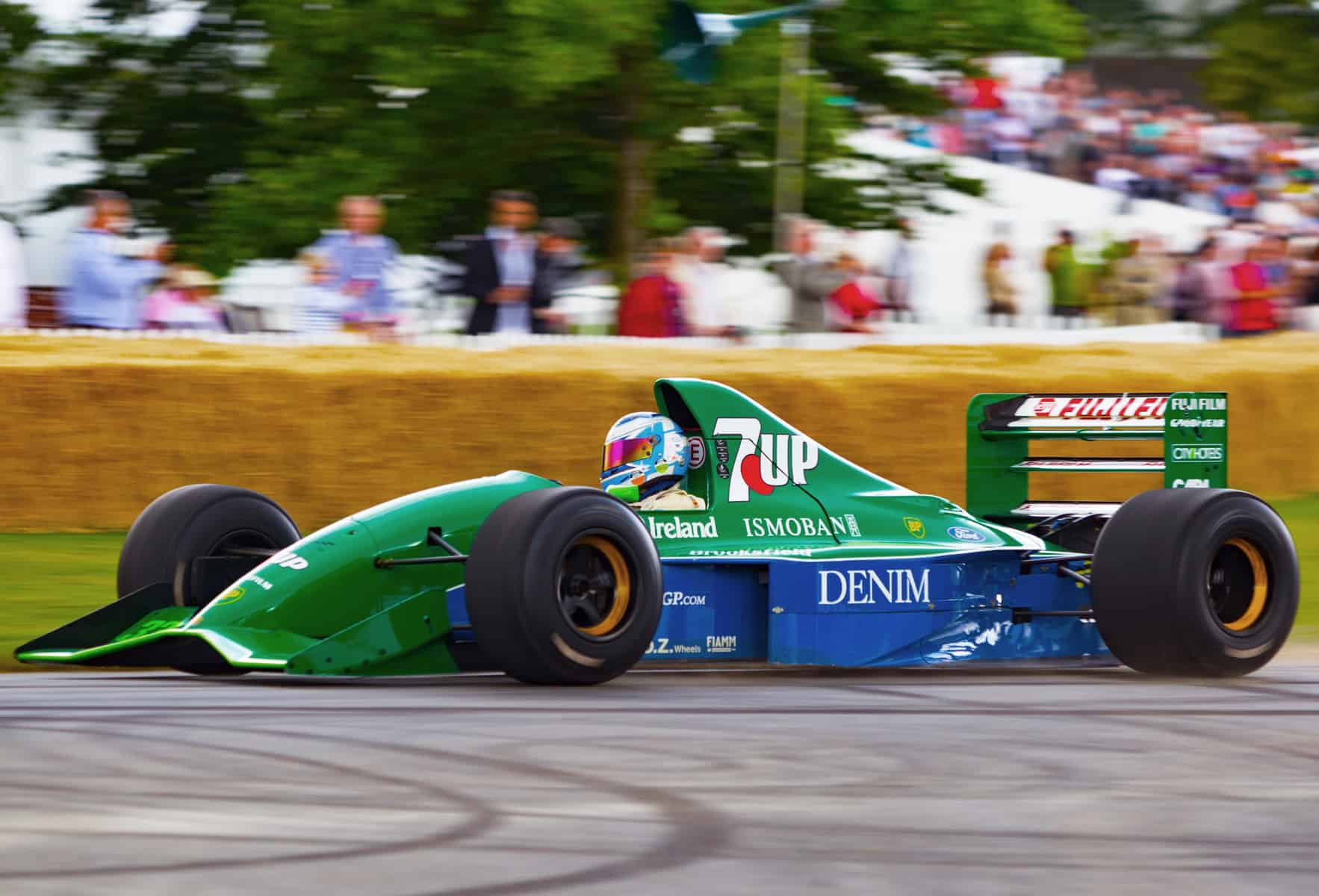
Jordan had not only managed to lure Anderson away from Reynard but also signed engineers Andrew Green and Mark Smith. This allowed the development work to be split into three; Anderson himself was in charge of the chassis and aerodynamics, Green did the suspension, and Smith was responsible for the new Jordan Grand Prix car’s gearbox. The result of their combined efforts was a very elegant, straightforward machine.
Like the highly influential Tyrrell of 1990, the Jordan 191 featured a raised nose but with a more subtle swoop to connect the front wing to the rest of the bodywork. What made Anderson’s solution particularly pleasing to the eye was the fact that the nose was slightly set back from the leading edge of the wing. In this post-turbo era, aerodynamic efficiency was key, so the rest of the car was as low and narrow as possible. The rear of the car featured a beautifully sculpted diffuser, which benefited from the increased airflow courtesy of the raised nose.
Like all Grand Prix cars of the era, the new Jordan was built around a carbon-fiber monocoque. The front suspension was connected directly to the composite structure, which also housed the driver and the fuel tank. The monocoque ended aft of the cockpit with the engine and gearbox serving as fully load-bearing members of the chassis. On all four corners, double wishbones were fitted with in-board springs and dampers that were actuated by push-rods.
One of the few off-the-shelf components that the Jordan Grand Prix team could use was the Ford Cosworth HB engine. Developed ahead of the 1989 season, it was originally available exclusively to the Benetton team. Again underlining how well Jordan’s entry in Formula 1 was timed, the HB V8 was available to customers for the first time in 1991. Jordan was the only other team apart from Benetton to have access to the HB engine in 1991, with the other customer teams still running the aging DFR.
Compared with the DFR, the HB V8 had a narrower, 75 degree V-angle, which helped packaging. It was not quite as powerful as the V10 and V12 engines produced by the likes of Honda, Renault, and Ferrari, but it was smaller, lighter, and more fuel efficient. In the ‘HB4’ guise as supplied to Jordan in 1991, the 3.5-liter engine was good for around 650 hp. It was mated to a six-speed manual gearbox that combined a bespoke casing designed by Mark Smith with internals supplied by Hewland.
Originally known as the 911, the first Jordan was ready for testing at the end of November 1990. After a brief consultation with Porsche, it was decided to change the name to 191, for which Eddie Jordan was rewarded with an eighteen-month loan of a brand new Porsche 911. Jordan’s budget was reportedly so tight that there was no money left for paint, so the first tests were completed with the car in bare carbon fiber. The only color was provided by a large, yellow Jordan Grand Prix sticker on the air-box. With only limited parts and engines available, Jordan needed a safe pair of hands, so retired Formula 1 racer John Watson was the first driver to take out the Jordan 191.
Another reason why the new Jordan had not been painted yet was simply that no one quite knew what color to actually paint the car in. The team’s F3000 backer Camel had decided to sponsor the Benetton team instead for the 1991 season. Eddie Jordan finally managed to make a deal with Pepsico to run a 7Up livery on the car instead. The striking two-tone green and blue color scheme was created by Ian Hutchinson. This worked on multiple levels as the green was also a nod to Jordan’s native Ireland, whose national tourism board was also providing backing. The rear wing elements were white and reserved for co-sponsor Fuji Film.
Signed to drive for the team were Italian Andrea de Cesaris and Belgian Betrtand Gachot. Having raced for Alfa Romeo, McLaren, and Brabham, de Cesaris brought a wealth of experience to Jordan. He also had a reputation for struggling to finish races and had raced for the modest Rial and Dallara teams during the previous three seasons. Gachot first raced in Formula 1 in 1989 but during the next two seasons struggled to actually qualify for races. This was, however, mainly due to the horrible cars he had been signed to drive.
The two Jordan 191s were ready for the season-opening United States Grand Prix at Phoenix. They were among the eight cars that needed to pre-qualify on Friday. De Cesaris unfortunately missed a gear and damaged his engine, so he did not make the grid. Gachot had no such issues and lined up for the race in fourteenth place. During the race, the young Belgian ran as high as seventh but eventually was forced to retire with an engine issue after seventy-five laps. The brand-new Jordan Grand Prix team had certainly shown great promise despite de Cesaris’s mishap in qualifying.
This would be the only time a Jordan would not make the grid during the 1991 season. The early form was finally awarded in round five, the Canadian Grand Prix. De Cesaris finished fourth, followed home by Gachot, scoring the team’s vital first points. In the following four Grands Prix at least one of the two drivers finished in a points-scoring position. De Cesaris matched his fourth-place finish at Montreal with another fourth in Mexico but a podium finish remained elusive.
An incident with a London taxi driver back in December 1990 would then come back to bite Gachot. He had been on his way to a meeting with Jordan and 7Up when he hit a taxi in traffic. Although no damage had been done to either car, a subsequent brawl resulted in Gachot being sentenced to two months in prison. The incident occurred during the 1991 season, which meant he had to step down from driving the Jordan ahead of his home Grand Prix at Spa Francorchamps.
It also left Jordan one driver short but with an opportunity to sell a seat in what had proven to be a very competitive car. He found Mercedes-Benz willing to fill that $150,000 seat for a one-off appearance of one of their junior drivers by the name of Michael Schumacher. The young racer had won the German Formula 3 title in 1990 but instead of stepping up to F3000, he decided to join the Mercedes-Benz sports-car program for 1991. It was an unusual move but with Jochen Mass as his mentor, he made steady progress. The reward was the Jordan drive, which he quite likely would not have gotten in 1991 had he followed a more conventional career path.
Schumacher immediately impressed, qualifying seventh on the grid, equaling Jordan’s best result to that point. De Cesaris would start the race in eleventh. Sadly, Schumacher’s debut was short-lived as he destroyed the clutch at the start and was out of the race before the end of the opening lap. The Jordan of de Cesaris lasted longer as he valiantly fought his way up to second. He reported overheating issues to the pits but he was encouraged to try and catch leader Ayrton Senna. Taking this huge gamble with Jordan’s first podium finish did not pay off, as the Ford V8 blew with just three laps to go.
Jordan would have been happy to run Schumacher in the remaining races but once again the Benetton team got in the way, signing the young German for the remainder of the season. The seat vacated by Schumacher was taken by Roberto Moreno, who would drive for Jordan in the next two races. In the final three races of the year, a young Alessandro Zanardi would serve as de Cesaris’ teammate. This came despite efforts from Gachot to get his seat back after his prison sentence was suspended.
No further points were scored after the stellar showing at Spa but the team nevertheless ended the year a very respectable fifth in the constructors’ standing. Among the teams beaten during this debut season were World Championship winners like Tyrrell, Lotus, and Brabham. For de Cesaris, it was his second-best season ever in Formula 1 and Gachot’s very best year in the sport, despite competing in just ten of the sixteen races.
All this success had come at a considerable price, which left the team in shambles at the end of the year. Jordan had sold the advertising real estate to 7Up very cheaply, so the team’s income had been minimal during the first year. He reckoned that once he was on the grid, more backers would join. This did not happen immediately, and Pepsico had little interest in increasing their budget for 1992, so the 7Up Jordan would race only for a second season.
Jordan eventually managed to attract new backing but also lost the Ford Cosworth engine supply due to financial issues. The following year, a Yamaha V12 engine was used, which was free of charge but also hopelessly unreliable.
Eddie Jordan sold the team at the end of the 2004 season but his legacy lives on in the team that will enter the 2021 Formula 1 World Championship as the Aston Martin Formula 1 team that raced as Racing Point F1 during the last couple of seasons. Having survived and thrived for thirty years running on a shoestring budget, the “Silverstone Team” regularly exceeded expectations; it’s simply impossible to predict what will happen next.
